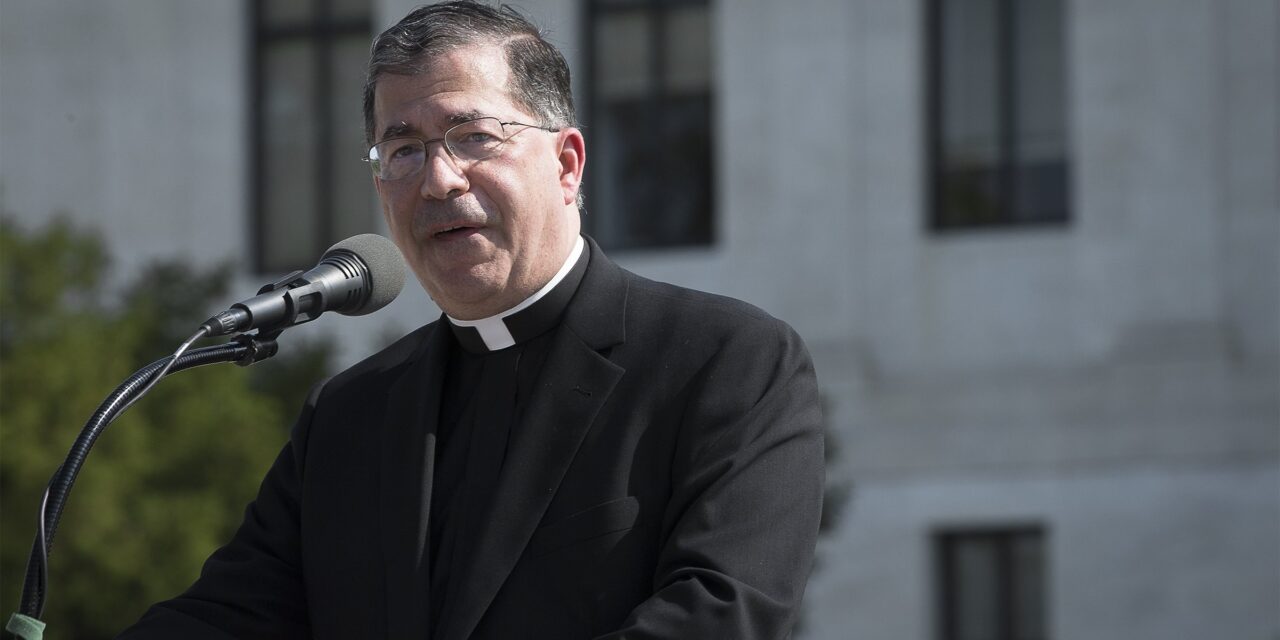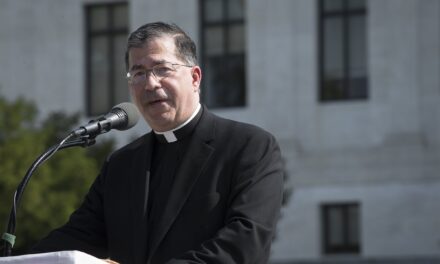“Each year you give us this joyful season when we prepare to celebrate the paschal mystery with mind and heart renewed.” (Sacramentary for Mass, Preface of Lent 1, prior translation).
The purpose of Lent is succinctly expressed by this prayer. Those preparing to enter the Catholic Church prepare for baptism into the paschal mystery. The faithful are reminded of their baptism, and will renew their baptismal vows at the Easter liturgy.
This baptismal focus is a life focus, and is illumined by Lenten readings as well as by the encyclical The Gospel of Life.
Baptism initiates us into the eternal life Christ gives us. “Eternal” does not only mean it never ends. It also refers to the “quality” of that life, namely, it is a share in the life of the Eternal God.
The baptized, therefore, are sons and daughters of God and are members of the Church, the People of Life. The baptized have taken hold of the eternal life promised them – “Therefore we are buried with him by baptism into death: that like as Christ was raised up from the dead by the glory of the Father, even so we also should walk in newness of life” (Rom.6:4).
The choices of the baptized are therefore to be shaped by their new identity. In John 4:15-24, we see how Christ calls the Samaritan woman to repent as she accepts the waters of new life. Lenten repentance is necessary so that God’s people may more deeply become who they are. They are called to see their sins more clearly. Hence baptism is known as “illumination.” The passage about the man born blind in John 9 is therefore a key Lenten passage.
Anyone who makes the Lenten journey is called to be more alert to the attacks on human life and dignity around them. In the Easter liturgy, the people of life are called to reject sin and all the devil’s works and empty promises. The “pro-choice” and “right to die” mentalities are two of those “empty promises” that are firmly rejected by the baptized. A rejection of these positions is integral to repentance. Lent is the perfect time to seek a clearer understanding of why this is true, which will in turn lead to a deeper affirmation of life, both natural and eternal, in the celebration of the Paschal Mystery.
Repentance is a changing of the mind, and with it one’s life, away from the path of sin and toward a life of holiness. It is not possible to repent of a sin one does not recognize or admit as a sin. During Lent, we ask to be delivered from such blindness, and to be forgiven even our hidden sins.
The application to the abortion problem is clear when we consider that the injustice of this act has been proclaimed as a “right” and a legitimate “choice.” Because such respectable elements of society as the Supreme Court, many medical associations, and even some Christian denominations, continue to call abortion a “right,” many find it hard to recognize it as a wrong. Part of the purification of Lent involves the metanoia, the “change of mind,” so necessary in this area.
The works of charity that constitute a fundamental form of penance can include reaching out to those in need of concrete assistance in their pregnancy. Volunteering at pregnancy resource centers is a perfect way to do this, as is the effort to make such centers better known in the community.
To stand up in any way for the unborn child – for instance, praying outside an abortion mill – can be a penitential act, since it often brings unwarranted criticism, even from fellow worshipers who should be doing more themselves to end abortion.
This Lent, may the whole Church be strengthened in her mission to build the Culture of Life!














